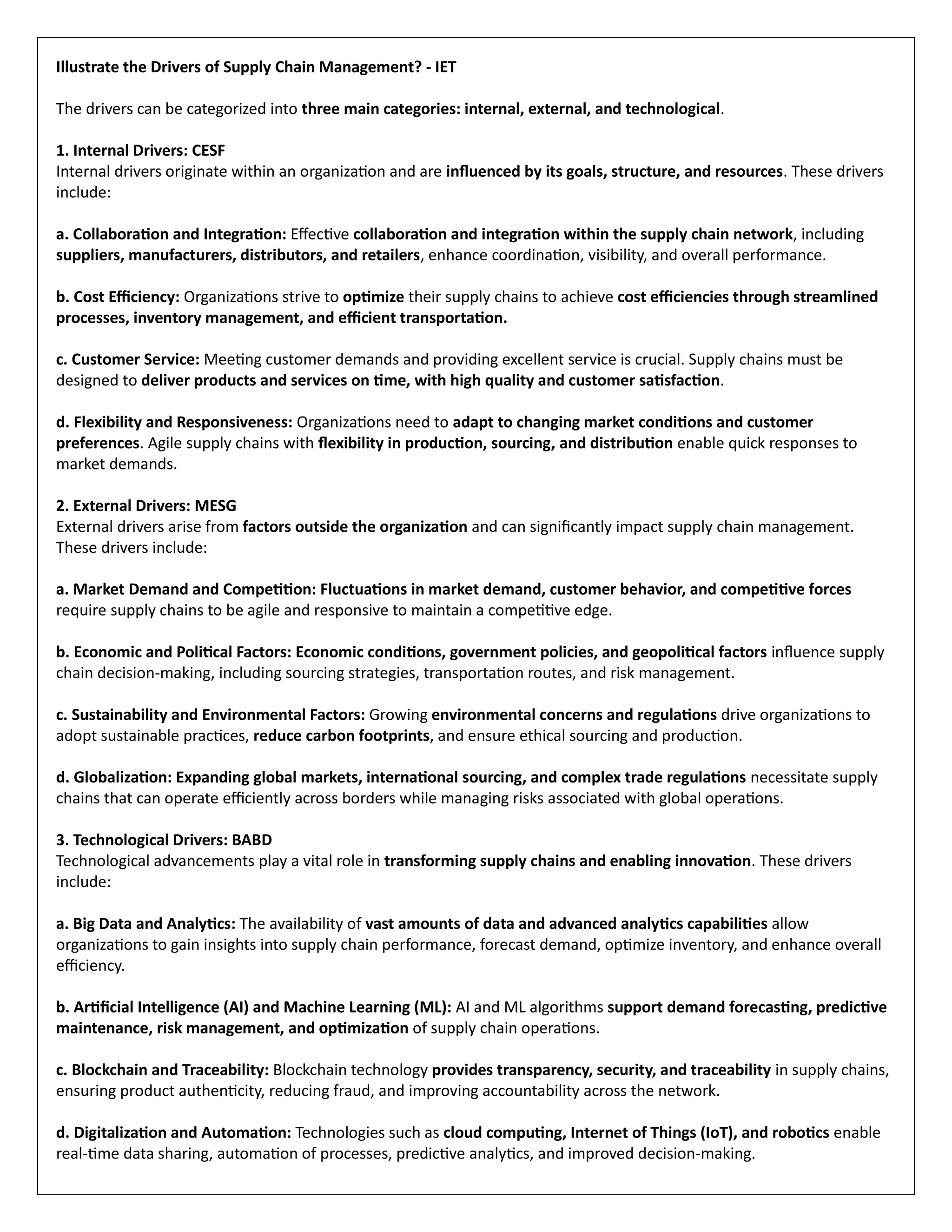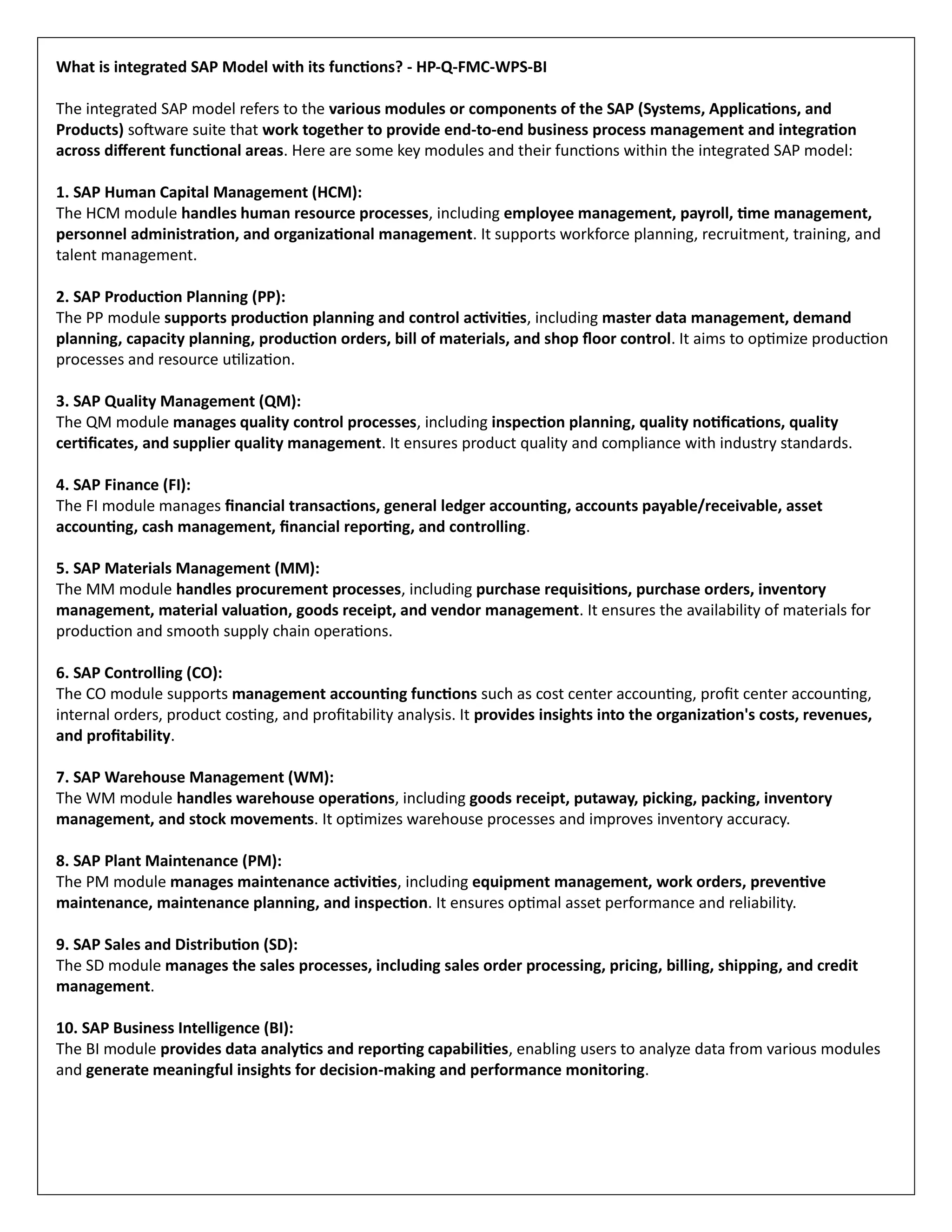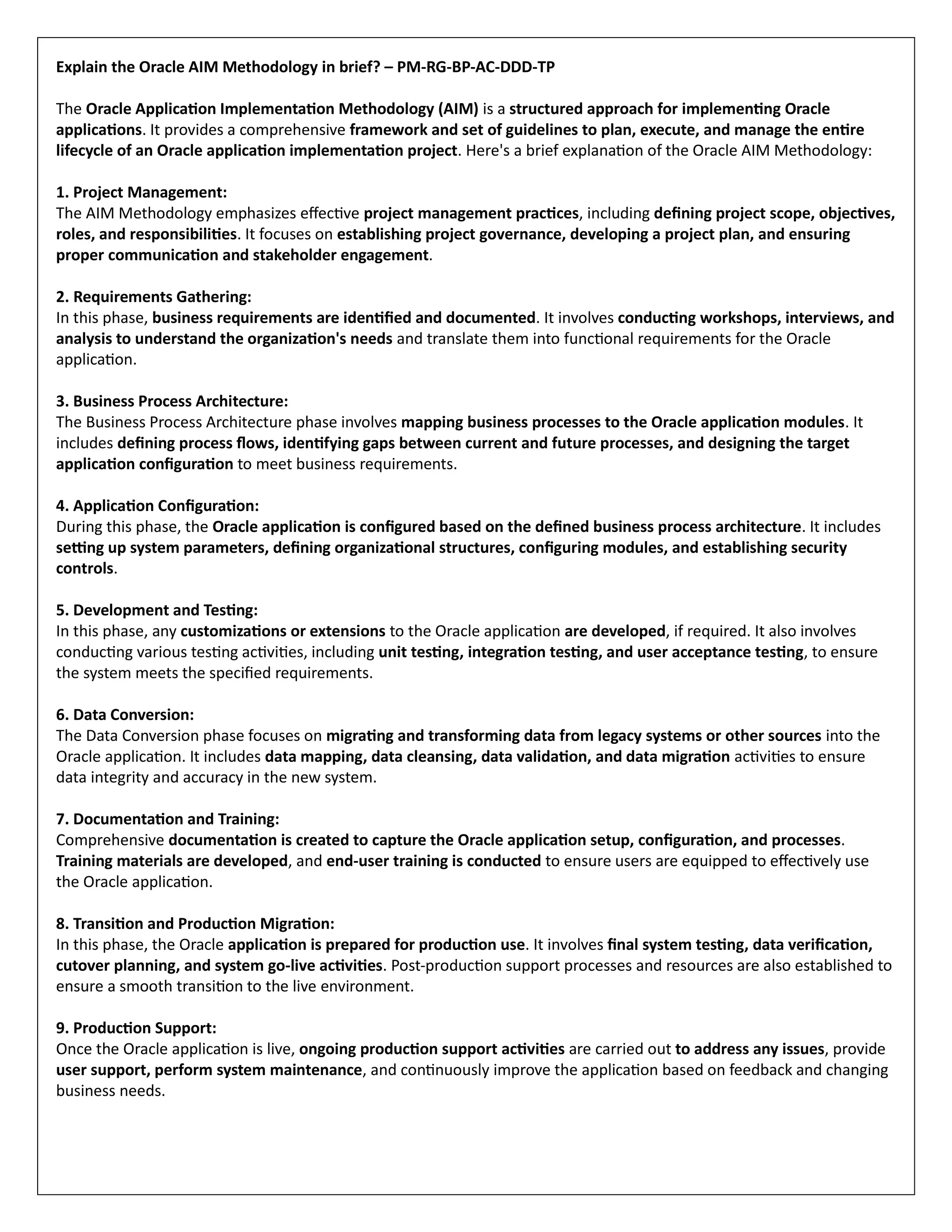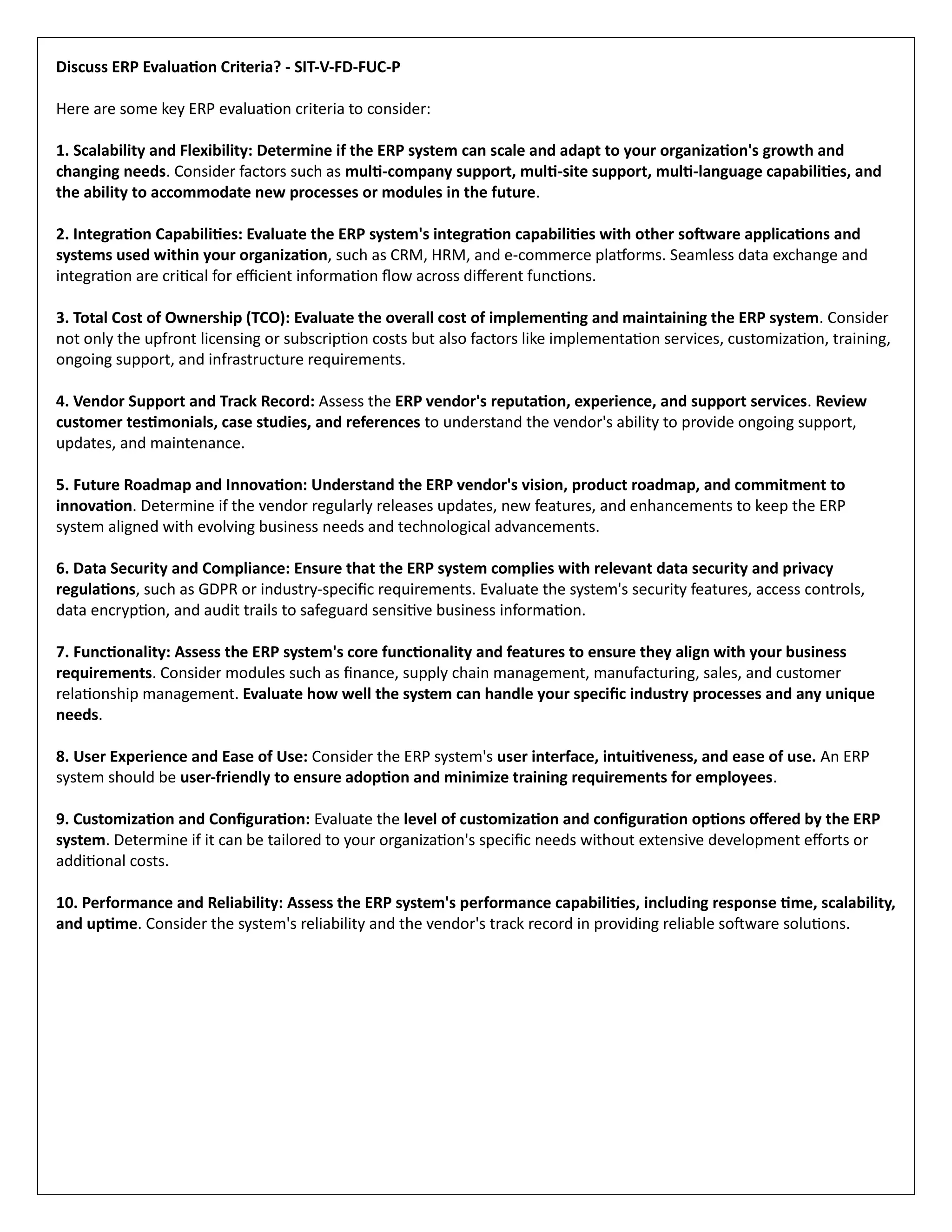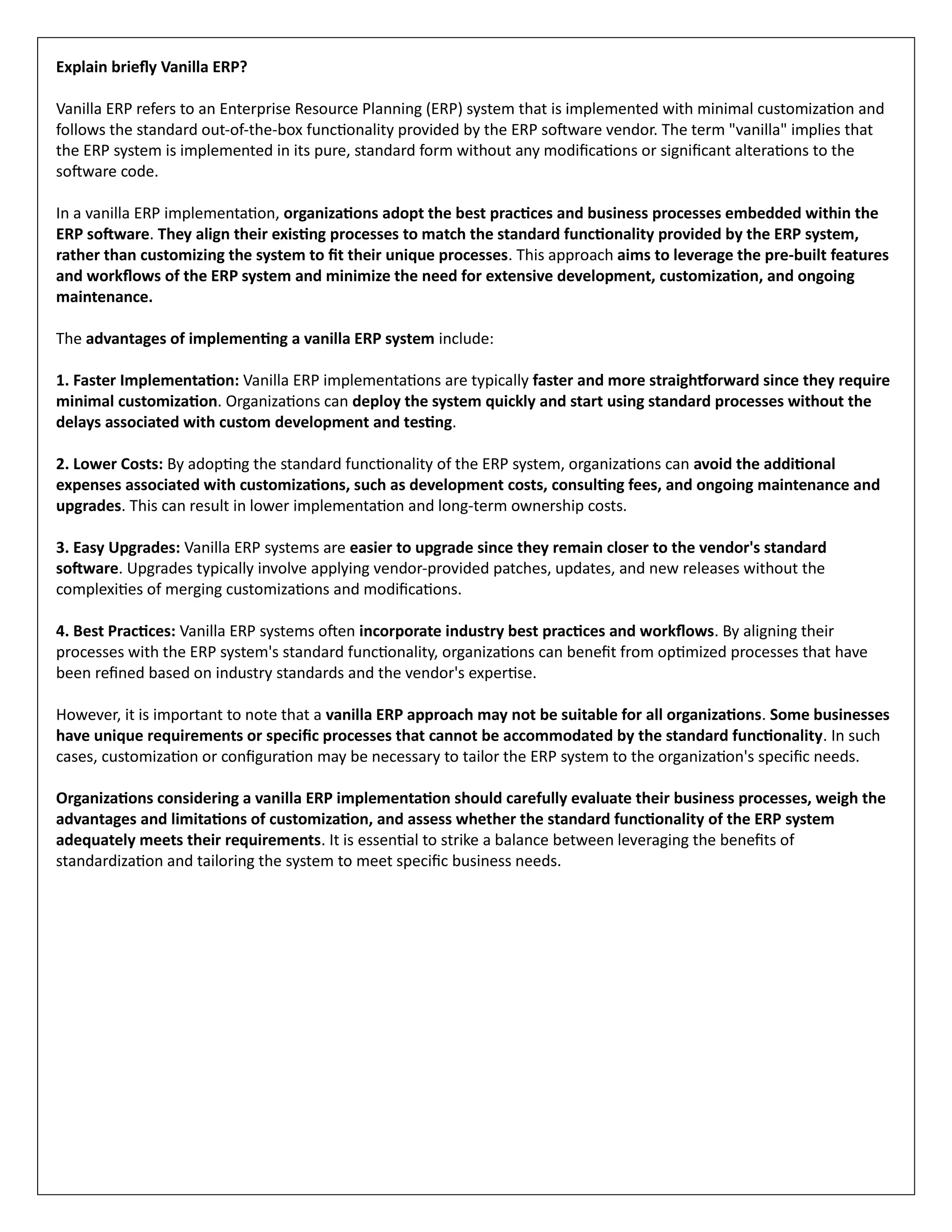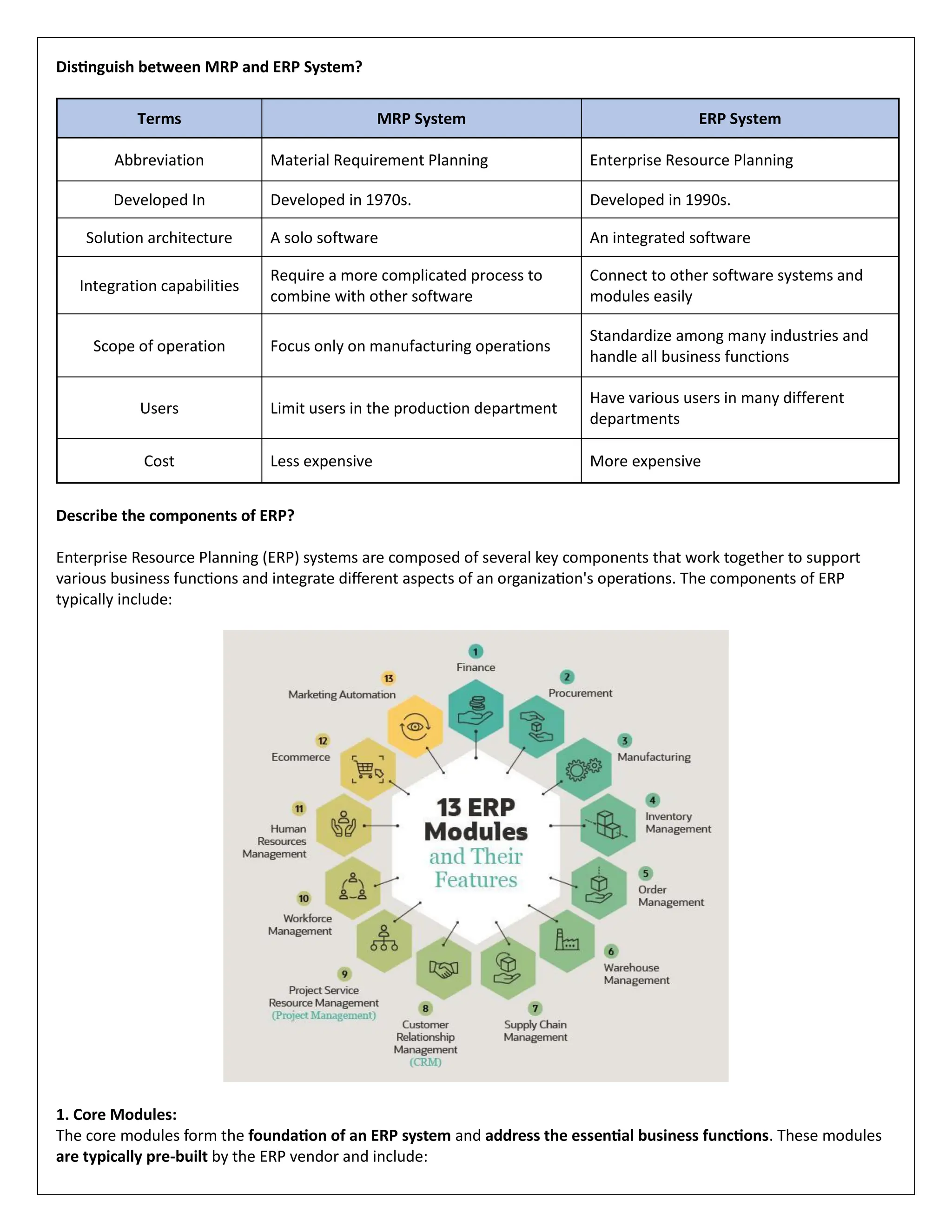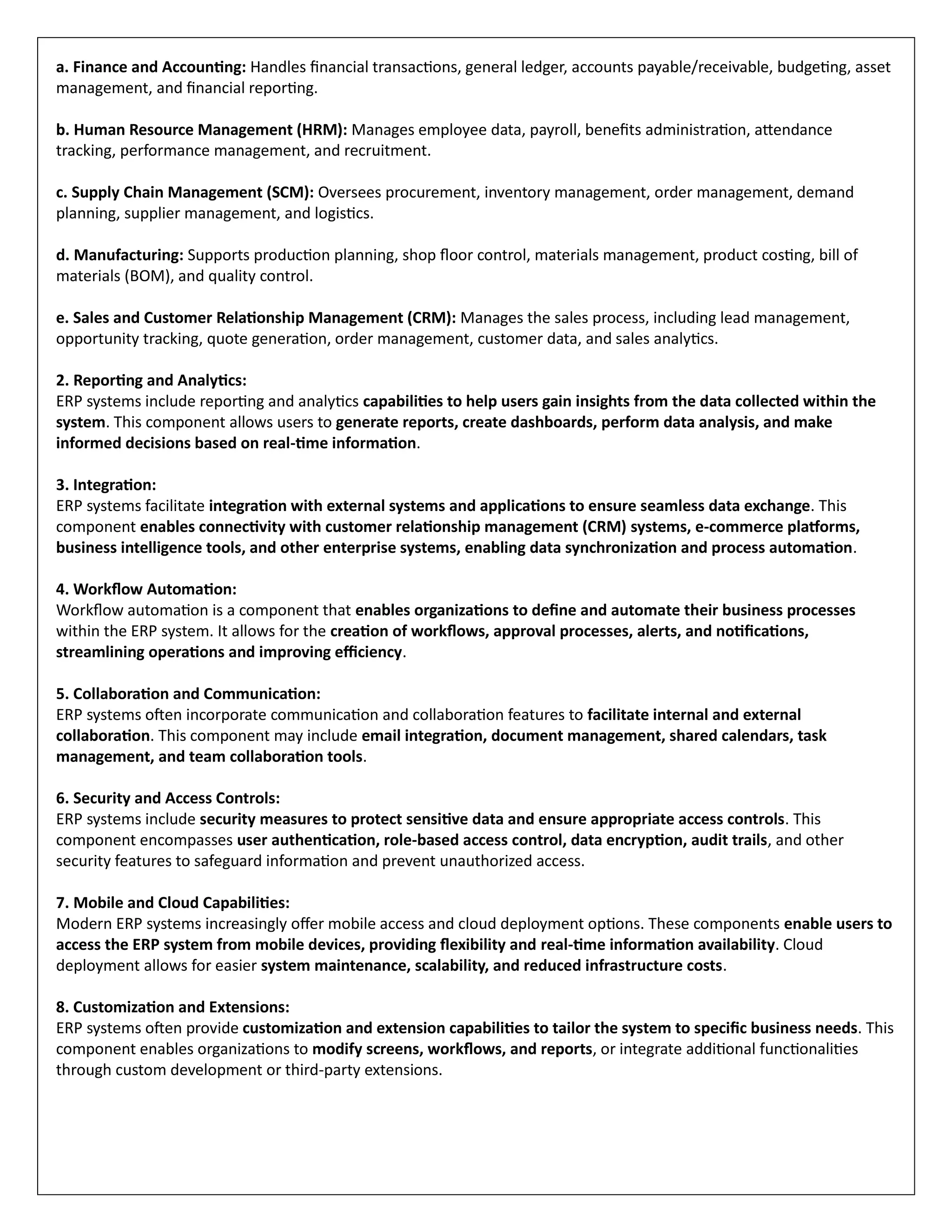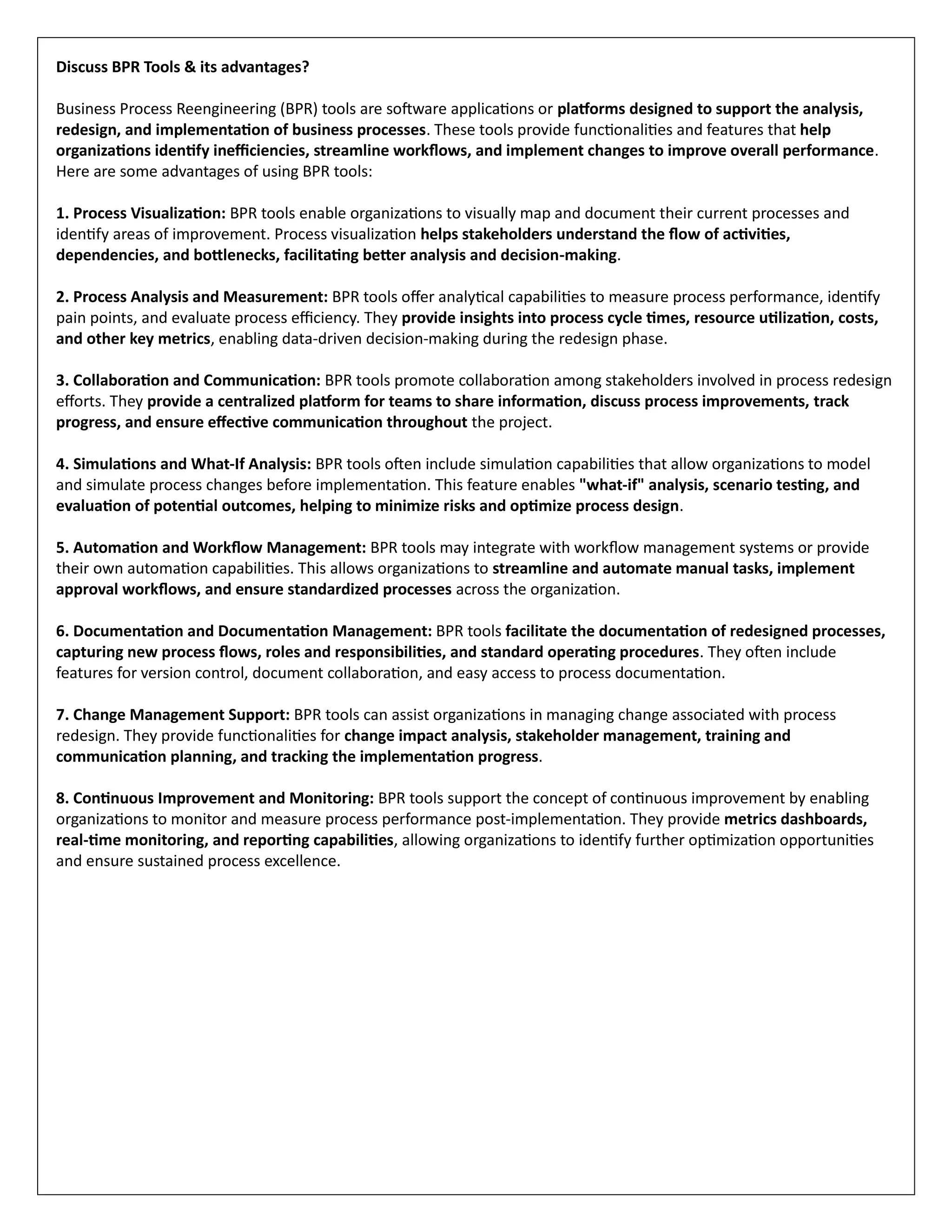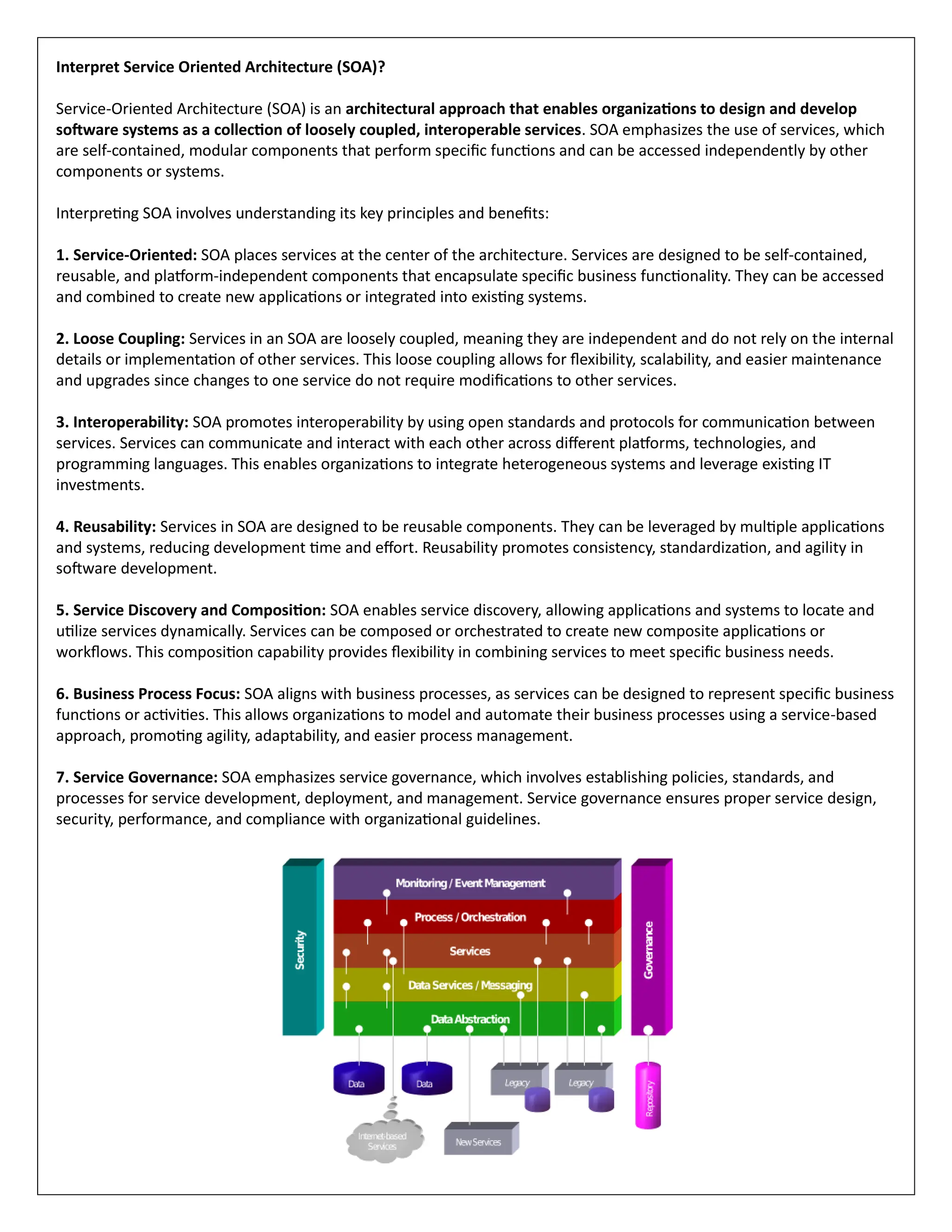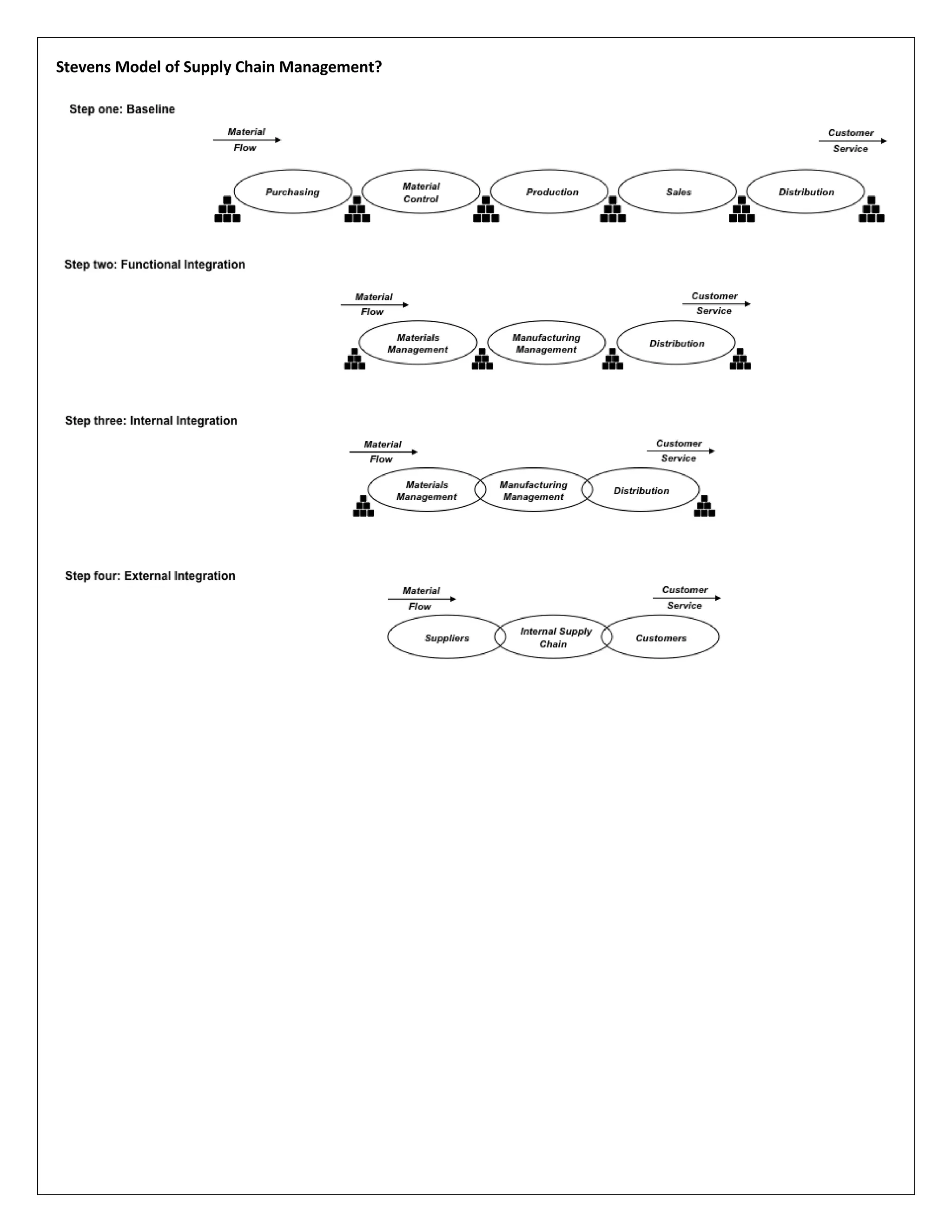The integrated SAP model refers to the various modules that work together to provide end-to-end business process management across functions. Key modules include human capital management, production planning, quality management, finance, materials management, and sales and distribution. The modules support processes like HR, procurement, inventory, accounting, and order fulfillment. Data from the modules can be analyzed using the business intelligence tools.
